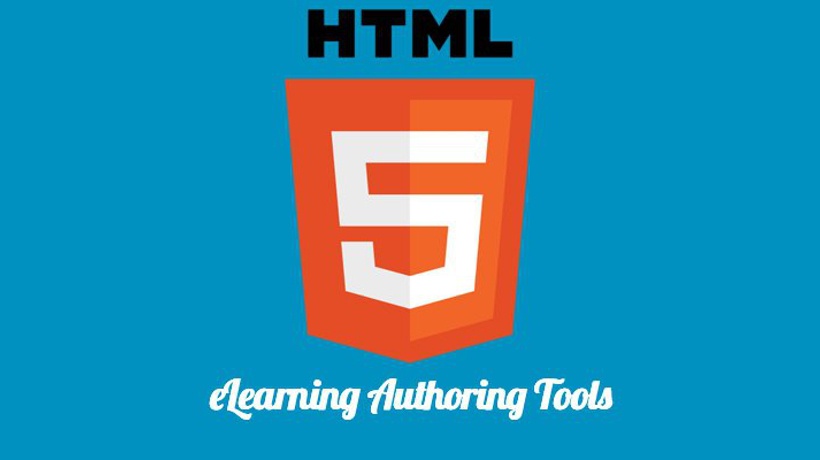Gomo Learning: Why Is It The Best eLearning Authoring Tool?
The gomo learning suite is a SaaS-based eLearning authoring tool which offers not one, but two great products that enable Learning and Development professionals to create, host, update and track beautiful multi-device eLearning, anywhere. The gomo eLearning authoring tool creates responsive and adaptive HTML5 eLearning content automatically. From a single HTML5 code base, content can be published once and then accessed by learners in any location on any device – be it desktops, tablets, or smartphones. Here are four reasons why gomo is the best eLearning authoring tool.
1. It’s Cloud-Based
A cloud-based eLearning authoring tool means that gomo is a browser-based, online tool to create, update, store, and distribute eLearning courses to learners, no matter where they are. Any eLearning courses produced in gomo are automatically stored and managed in the cloud, which therefore eliminates the need for complicated software uploads or downloads. Getting started with gomo is as simple as logging into gomo with the browser of your choice and you can immediately begin creating and delivering eLearning courses.

Another huge benefit of a cloud-based authoring tool is the power of collaboration. These days, teams are less likely to be centralized in one office, working five days a week. Instead, people tend to work more from home, or from different cities (and even different countries!). Before the Internet simplified our working lives, this would never have been possible but, being cloud-based means that gomo users can design, edit and distribute their eLearning courses from anywhere in the world. All you need is an Internet connection! The software also allows for multiple users to collaborate on the same eLearning course at the same time. Changes can be made in real-time, which means that when the pressure is on to deliver content or make urgent updates to eLearning courses, this can be done quickly and easily.
2. It’s Easy To Navigate
If you can use a web browser, you can use gomo for all your eLearning authoring needs. gomo has been designed to cater for learning designers of all levels of expertise – from experts to beginners. Thanks to quick start wizards, you can literally be up and running in minutes without having to worry about downloading or updating software. With gomo’s quick start wizards and a variety of attractive looking, eye-catching themes and templates, you can start creating your content straight away.
Screen templates are a great way to make sure your eLearning content is visually stimulating and engaging for users. Creating highly interactive screens with gomo is as easy as choosing a pre-configured screen template. After that, gomo does all the ‘heavy lifting’ for you by creating the layout and other items needed for the chosen screen type. All you need to do is drop in your content and hit the publish button.
3. It Has Detailed, Built-In Learner Analytics
These days, it’s not enough to produce large quantities of great eLearning content without evaluating their effectiveness. More and more organisations are asking Learning and Development (L&D) teams to prove the value of their training programs. Whether it’s the CEO or the entire board, many Learning and Development professionals are being asked questions about how the company’s learners are interacting with the content, how often and whether they’re absorbing the content. Gomo’s cloud-based content management system enables fast analytics and tracking features that measure the impact of training. With a built-in Tin Can (also known as xAPI) reporting dashboard, gomo provides an easy and visual way of analyzing learner data.
Because gomo automatically tracks each and every user event, you get access to a rich pool of data from which to draw insights and reports. This helps you to assess which aspects of the training program are working and which need improvement. For example, with gomo analytics, you would be able to see that there’s a specific question in the assessments that most users are getting wrong. If most people are getting it wrong, then perhaps the question is unclear or the section of the course being tested needs more explanation.

The detailed analytics in gomo include:
- Who has (or hasn’t) taken the training.
- When they took the training.
- Course completions.
- The types of devices they’re learning on (desktop, tablet or smartphone).
- Where the learners are located.
- Individual questions and answers.
- Passes, fails, and completions. With gomo’s SCORM LMS wrapper (a tiny file of just 17KB – no need to worry about large file downloads ever again!), you can embed gomo courses directly into any SCORM LMS. The two technologies work hand in hand for a seamless user experience, both for learners and learning designers. L&D professionals can still use their existing LMS to provide the levels of compliance and HR data that those departments traditionally need but, with the added ‘amplification’ of xAPI, there are deeper, richer insights to be gained. The gomo analytics dashboard allows you to view reports with a number of different detailed parameters, all of which can then be exported into a spreadsheet like Microsoft Excel or Google Sheets for your in-house reporting needs.
4. It’s Fully Responsive And Adaptive, Using HTML5
Courses designed in gomo are 100% responsive and adaptive. If you’re not sure what this is, cast your mind back to the early days of the smartphone, when most websites were not optimized for mobile devices. Remember how you had to scroll up and down, or left and right to read the content, and how many of the features, like drop-down menus or animations, wouldn’t work?
The user experience was clunky and frustrating, largely because content didn’t completely fill up the screen. Things are much better now and that’s all thanks to the worldwide adoption of the HTML5 standard as the code behind all Internet content and browsers. These days, mobile learning (also known as mLearning) content can automatically detect the screen size of the device you’re browsing on and then adjust content accordingly to fill the screen. But beware, not all authoring tools do this – many of them shrink a rectangle of content into one third of a smartphone display, making it unusable. However, gomo is fully responsive and adaptive, which means eLearning course content looks good (and full screen), no matter what device it’s displayed on – desktop, tablet or smartphone.

How does gomo accomplish this? It’s quite simple really! gomo allows learning designers to create content using a two, three or four column layout. Depending on the screen size of the device, the content will either fill the screen entirely (as with a desktop computer which has a larger screen size) or content blocks will ‘drop’ down and be displayed one below the other (common on devices with smaller screens like smartphones and tablets). With a responsive design authoring tool such as gomo, this happens automatically, without you having to worry whether learners will be able to read the content easily.

A Final Word On The Gomo eLearning Authoring Tool
Gomo hosting allows you to get your eLearning content into the hands of your learners instantly, no matter where in the world you are or where they are. Because gomo courses are cloud-based as well as fully responsive and adaptive, learners can access their training programs anywhere they like, on the device they prefer. Better still, gomo comes with full built-in xAPI analytics, making it easier to track your learners’ behaviors, analyze learning data, as well as report back significant findings to management.





